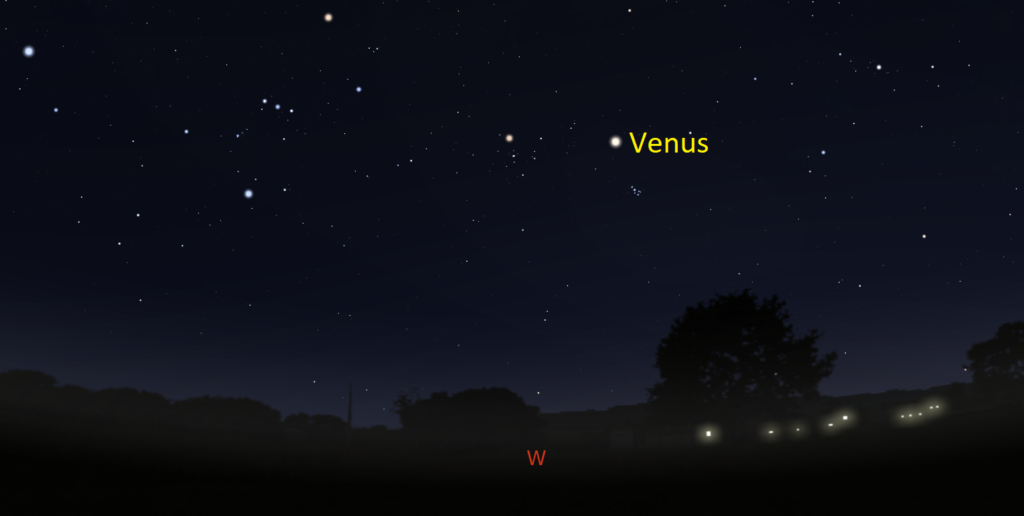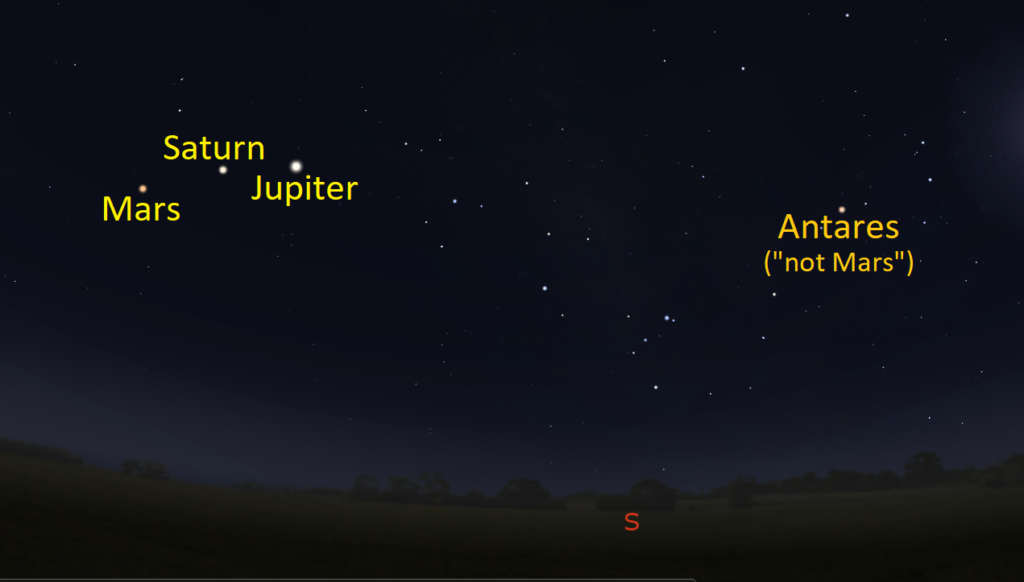Skywatching at home: Spot planets in the sky tonight
April 9, 2020
By Amy Sayle
How do you tell a planet from a star? Three tips will help you spot four planets in tonight’s sky:
1. Planets tend to be bright.
The first planet-finding tip is that the planets you can easily see with your unaided eye tend to be bright, sometimes brighter than the brightest stars in the night sky.
Currently, the only evening planet is Venus, and it appears very, very bright. It’s hard to over-emphasize how absurdly bright this particular planet looks. As long as the sky is clear, you’ll be able to spot Venus fairly soon after sunset. Look for it in the same direction that the Sun set, toward the west.

If you’ve been watching Venus over the last week, you may have noticed its progression from one side of the Pleiades star cluster to the other. That’s because planets move against the background of the stars. But planets don’t move just anywhere in the sky, which leads us to tip #2:
2. Planets lie on or near the ecliptic.
The ecliptic is the apparent annual path of the Sun in front of the other stars. It’s Earth’s orbital plane. Because the other planets in our solar system orbit the Sun in roughly the same plane that Earth does, you’ll find planets on or near the ecliptic.
The ecliptic passes through the constellations of the zodiac. This is why it’s worth learning to identify those constellations. If you see something bright in one of them that looks like it doesn’t belong, you’re probably looking at a planet.
Because planets always lie near the ecliptic, they will often look like they’re lined up in the sky. That’s the case with Mars, Jupiter, and Saturn currently (April 2020). They’re hanging out together in the southeastern pre-dawn sky. Think of them as a nice reward for you, for getting up very early, before the Sun.
But don’t be fooled by bright stars that lie near the ecliptic. For example, the star Antares follows the first two planet-finding tips, and its reddish tint makes it look an awful lot like the red planet, Mars. In fact, the word Antares means “not Mars” or “rival of Mars.” So here’s a final tip to help you tell the difference between a star and a planet:
3. Planets generally shine steadily.
Just remember that it’s “twinkle, twinkle little star”—and not “twinkle, twinkle little planet.” Although planets can sometimes appear to twinkle, especially if you’re looking through a thick layer of atmosphere close to the horizon, generally planets look like they’re shining more steadily than stars.
What about Mercury? Because it orbits the Sun so much closer in than Earth does, Mercury will always appear to lie fairly close to the Sun in the sky. Currently, Mercury rises less than an hour before sunrise and will be difficult to spot in the morning twilight.
Even if you live under light-polluted skies, you will still be able to see the other four planets, because they’re so bright. Will your sky be clear tonight? Do some skywatching from home and test your planet-finding skills!

